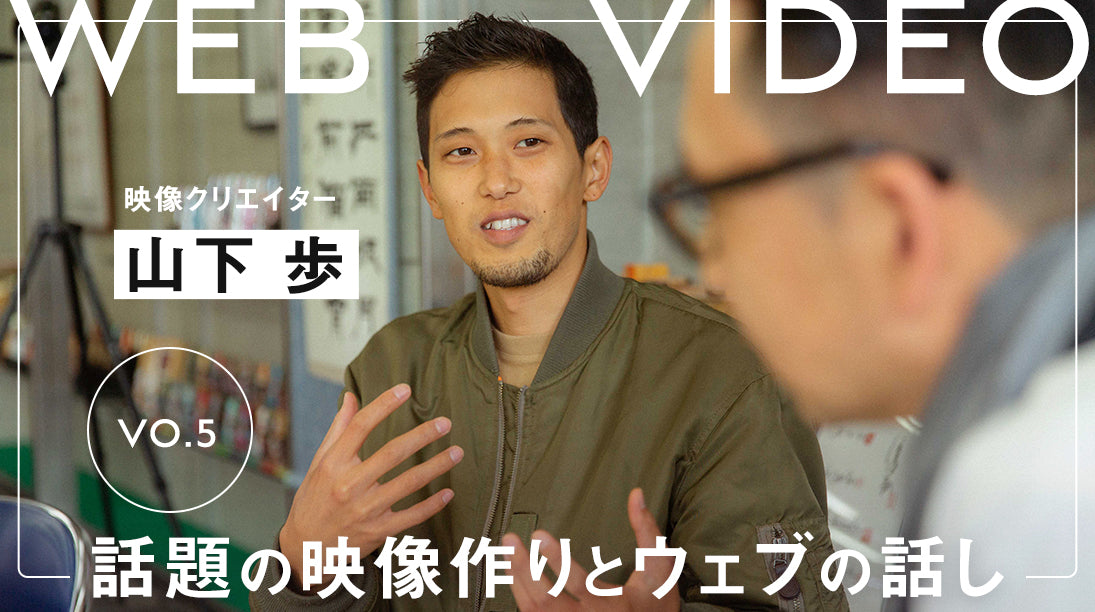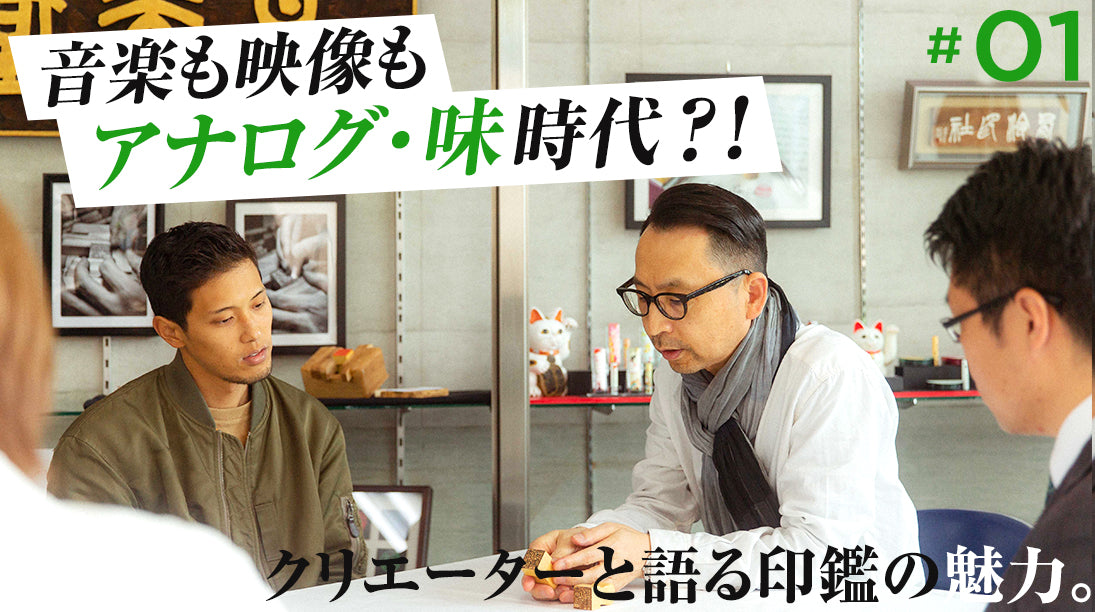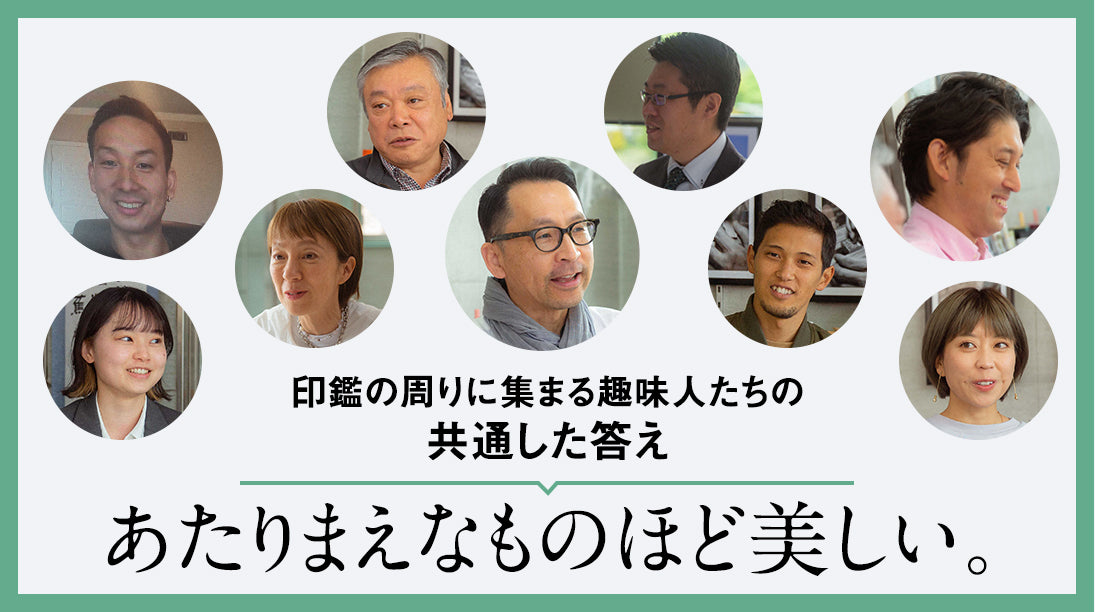
05: Talk about popular video production and the web.
Ieyasu: But as Mr. Arakawa said, it's quite rare to see such an imagery, especially for a seal!
Harada: When this project started, I told Ieyasu that I didn't have anyone who could shoot videos, and he asked me, "Would you rather have someone who can properly and subtly convey traditional industries, or someone who can convey them from a completely different angle?" When I saw Yamashita-san's work, I said, "This is definitely it!"
Ieyasu: So, I asked Yamashita-san what he thought about making a video of a seal, and he readily agreed, saying, "Sounds interesting! Let's do it!"
Yamashita: When I heard about this project, I didn't just think about how seals are declining and that we have to somehow sell them or preserve them, but I wanted to elevate them to art. President Harada is a rock star, right? I wanted to present Harada Shokodo as an artist. The first thing I created was a video that strongly conveyed the concept of searching for identity, which is an encounter with a seal. It directly conveys the idea that finding a seal is like diving into the sea, walking through the desert, or wandering through the forest to find your unique self.

Harada: It was awesome. I was like, "Here it comes!"
Ieyasu: It's obviously a really cool video, but more than anything, I thought it was a fantastic video that made people realize something that many Japanese people have forgotten - that a personal seal is a part of one's identity. And Shimazu-san put it on a web page and created a flow that encourages people to buy their own personal seal, in the same way that they find their identity.


Shimazu: Yamashita's visuals are strong, so we worked on creating something that would stimulate the emotions of customers and make it even easier for them to buy.
Harada: We decided to use this momentum to make an overseas version as well, so we asked for an English version again so that it could be purchased by people overseas, not just the Japanese market.
Ieyasu: And so the second film was born. It was shot on location in Okinawa.
Shimazu: Actually, our president also appears on the show. (Try looking for him.)
Harada: It's a great video that conveys that seals can be used in a variety of ways, not just for normal purposes, such as enjoying art or stamping pieces of work you've made yourself, and that if you order one, it will be delivered to you.
Yamashita: I would like to convey that there is more freedom and potential in countries, people, and uses than people think.
Ieyasu: And the latest work, nature is reflected on the mirror surface of Genjimetal! It's not CG, right?
Yamashita: It's not CG. (laughs) I actually projected it onto the mirror-like surface of the print.


Yamashita: It may seem a bit conceptual, but if a seal is a representation of a name, then isn't a name the very existence of the phenomenon? Mountains and air exist, but because of a name we can see a shape. It is limited. Looking around the world, wars are occurring between countries and between people, and perhaps it is because of the limitation of a name that we are missing the whole picture. Even though we are connected to nature, the air, and the universe, and we live within that connection. Dualistic things like me and you, man and woman, combine to become one. When two things combine, the individual disappears and one is seen, and in genjimetal the letters disappear and the self is reflected.
This may be a very Japanese way of thinking, but it's about reflecting yourself and existing in a place that is empty. It's also like Zen thinking.
The first, second, and third films all delve into the meaning of the seal and get to the heart of the matter.
I'm looking forward to the next installment, so the story continues.








